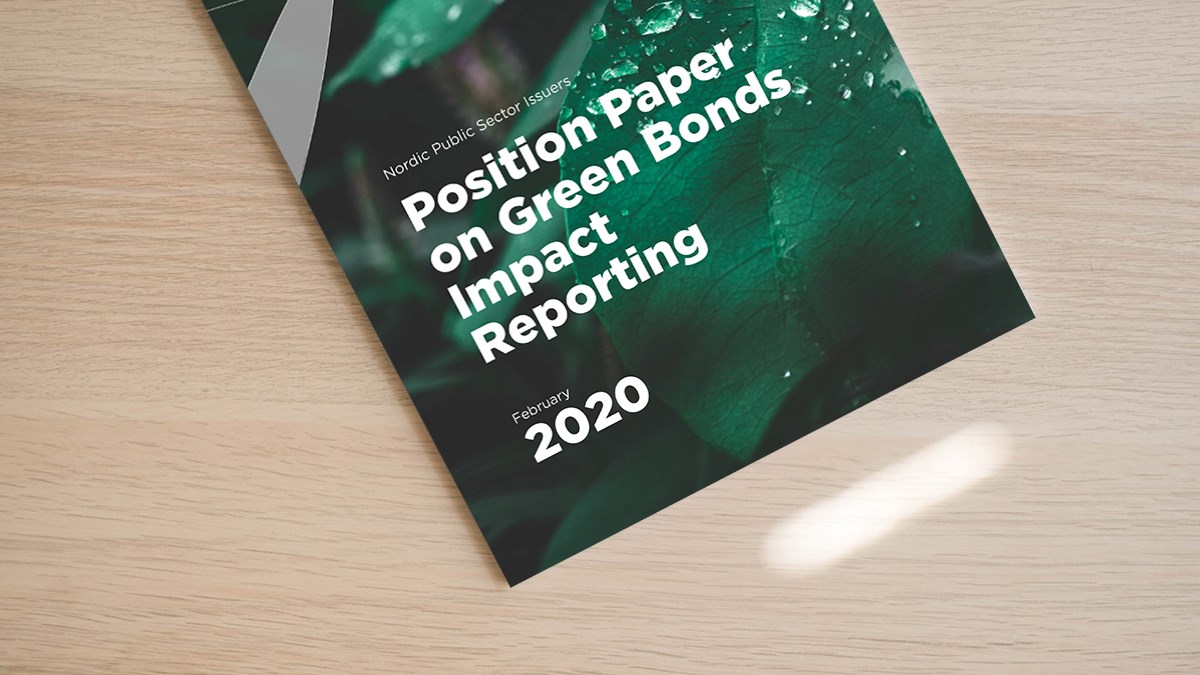Nordic issuers release 2020 update to their green bonds impact reporting guide
The Position Paper on Green Bonds Impact Reporting, originally launched in October 2017 by a group of ten Nordic public sector issuers, has been published in an updated version.
Download the 2020 version of the Position Paper here.
The new version of the Position Paper replaces the January 2019 version. Updates include improved structure and readability, a revised emission factor for electricity, and certain recommendations to accommodate the suggested requirements of the EU standard.
– With the EU Sustainable Finance Action Plan and the EU Green Bond Standard (EU GBS) soon to become a reality, we are anticipating even stronger interest for a harmonised approach to green bonds impact reporting going forward, says Torunn Brånå, Head of Green Finance at KBN and chairperson of the cooperation’s technical/environmental working group.
The 2020 Position Paper recommends issuers to provide both allocation and impact reporting, to distinguish between financing and refinancing, and to report a breakdown of projects by the nature of what is being financed. In addition, the Position Paper’s existing mapping to the SDGs has been expanded to incorporate also the EU Environmental Objectives.
The updated recommendations will see the Nordic issuers report less CO2 impact, in relative terms, from many of their financed green investments. This is because the baseline emission factor for electricity has been revised downwards, from 380 g CO2e/kWh to 315 g CO2e/kWh, to echo updated grid factors from the International Energy Agency (IEA) and the International Financial Institutions (IFIs), including the European Investment Bank (EIB) and the Nordic Investment Bank (NIB).
Torunn Brånå says the emission factor for electricity is a key assumption when calculating the environmental impact of the projects financed.
– Deciding on a joint approach for estimating the impact of electricity used, reduced or produced has been one of the important tasks of this group. Now, for the first time, the emission factor has been updated to reflect mainly a more ambitious expected decarbonisation of the European energy grids.
Revising the grid factor to result in less reported CO2 impact is in other words good news, according to Brånå:
– This means the development of our energy systems are going in the right direction. The revision will lower the positive impact of energy efficiency projects and renewable energy production, whilst reducing the negative impact of an increased use of electricity, be it for electrical bus fleets or the operation of a project, she explains.
Although developed with the primary aim of assisting Nordic public sector borrowers in reporting the environmental impact from their investments, signatories also hope that the Position Paper will prove useful for issuers from the private sector, issuers from other countries as well as for the investor community.
The Position Paper has been developed by a group comprising public sector green bond issuers from the four Nordic countries Denmark, Finland, Norway and Sweden. They include the local government funding agencies KBN (Norway), Kommuninvest (Sweden) and MuniFin (Finland); the Swedish Export Credit Corporation (SEK); and seven Swedish municipal or regional issuers including City of Gothenburg, the municipalities of Lund, Norrköping, Västerås and Örebro, Region Skåne and Region Stockholm.
The issuers’ work is supported by SEB and Crédit Agricole CIB, with input from CICERO Shades of Green, the Nordic Investment Bank, as well as several investors.
About the Nordic Position Paper on Green Bonds Impact Reporting
The Nordic Position Paper proposes an outline for reporting environmental benefits of green bond investments. It also provides guidance on general matters such as to distinguish between reduced and avoided emissions, as well as to report impact in relation to disbursed green bond allocations.
Moreover, the Paper provides suggestions for metrics and indicators relevant to eight different project categories. The effort builds upon reporting approaches suggested by the Green Bond Principles and multilateral development banks, as outlined in the GBP Handbook – Harmonized Framework for Impact Reporting.
The Paper is used as the reference framework for emerging impact reporting platforms such as the Green Assets Wallet and the Nasdaq Sustainable Bond Network Platform. It is also referenced in the proposal for an EU Green Bonds Standard, published by the EU Commission’s Technical Expert Group on Sustainable Finance.
